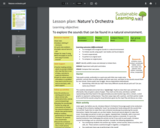
First, students listen to the sounds around them in nature. Then, students create music using objects found in the natural world.
- Subject:
- Earth and Space Science
- Life Science
- Material Type:
- Activity/Lab
- Date Added:
- 03/11/2024

First, students listen to the sounds around them in nature. Then, students create music using objects found in the natural world.

Students are tasked with selecting an outdoor activity that they would like to engage in for at least 20 minutes every week over the course of the semester and reflect upon their experiences before, during and after the activity. For example, they might choose to go for a walk, seek out a hike in different parks each week, relax by the lake, or go for a swim.
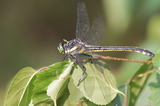
This series of 5 high-quality, standards-aligned, inquiry-based activities and one STEM challenge have been field-tested by secong grade students and families of Wequiock Children's Center for Environmental Science during Safer At Home orders. These activities encourage students to use natural areas around their homes and in their neigbhorhoods as they improve their science and engineering skils relating to plant and animals interdependence. Created as a part of a WISELearn OER Innovation project, Connect, Explore, and Engage: Using the Environment as the Context for Science Learning was a collaboration of the Wequiock Children's Center for Environmental Science and the Wisconsin Green Schools Network. One of the goals of the project was to create standards-aligned lessons that utilize the outdoor spaces of the school (as well as those of the students' homes). These lessons were created to take place during the spring. However, some of the lessons could be conducted during the fall. Cut flowers from a florist may be used in place of ones found living outdoors.The title image was used with permission and is courtesy of Joe Riederer. The observation protocol "I Notice, I Wonder, It Reminds Me Of, I Think Maybe" has been adapted from that of the BEETLES Project.
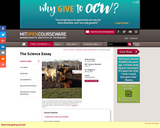
" The science essay uses science to think about the human condition; it uses humanistic thinking to reflect on the possibilities and limits of science and technology. In this class we read and practice writing science essays of varied lengths and purposes. We will read a wide variety of science essays, ranging across disciplines, both to learn more about this genre and to inspire your own writing. This semester's reading centers on "The Dark Side," with essays ranging from Alan Lightman's "Prisoner of the Wired World" through Robin Marantz Henig's cautionary account of nano-technology ("Our Silver-Coated Future") to David Quammen's investigation of diseases that jump from animals to humans ("Deadly Contact")."

Over the course of the semester students will create, maintain, and compare a nature journal and digital science notebook. The intent of this activity is for them to become familiar with how journals/notebooks can be used by learners to facilitate scientific inquiry endeavors from both nature-based and technology-based perspectives.
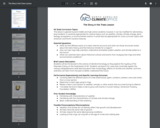
This lesson teaches students about the parts of a tree, and what patterns, markings, etc can tell us about a tree's history, and the land around it. Students will then use this information to make predictions about weather and climate patterns.

Subject considers how the visual and material world of "nature" has been reshaped by industrial practices, beliefs, structures, and activities. Readings in historical geography, aesthetics, American history, environmental and ecological history, architecture, city planning, and landscape studies. Several field trips planned to visit local industrial landscapes. Assignments involve weekly short, written responses to the readings, and discussion-leading. Final project is a photo-essay on the student's choice of industrial site (photographic experience not necessary).
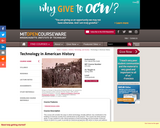
A survey of America's transition from a rural, agrarian, and artisan society to one of the world's leading industrial powers. Treats the emergence of industrial capitalism: the rise of the factory system; new forms of power, transport, and communication; the advent of the large industrial corporation; the social relations of production; and the hallmarks of science-based industry. Views technology as part of the larger culture and reveals innovation as a process consisting of a range of possibilities that are chosen or rejected according to the social criteria of the time.

Through this experience, preservice teachers will learn about and experience the benefits of nature journaling, supports for beginning nature journaling, and how to successfully take children outdoors to learn.
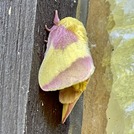
This nature journaling unit is intended for use in an upper division early childhood education science and environment methods course; and will occur in three steps, likely during three consecutive class periods. The intention of this learning sequence is to prepare early childhood pre-service educators to implement nature journaling experiences in order to facilitate emergent cycles of inquiry that will extend theory build and wonder in young children. First the pre-service educators will learn about nature journaling, how to engage with the practice themselves, and how to facilitate nature journaling with young children. Then, through a series of nature journaling practice activities, the pre-service educators will engage in their own nature journaling practice as it connects to the broader early childhood science question of ecological perspective taking and participation with nature. Finally, they will explore how to facilitate and observe children’s nature journaling practice, and how to utilize the questions that emerge from this recurrent practice in cycles of inquiry planning.
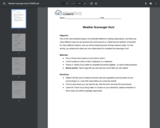
This activity teaches students how to make observations, specifically about the weather.
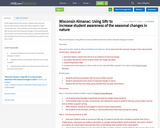
At the beginning of each month, students will read and discuss that month's essay from Aldo Leopold’s A Sand County Almanac. They will then use the Wisconsin Almanac Siftr to document the seasonal changes in the natural world around them. At the end of each month, students explore the Siftr postings from their peers and identify any patterns they see in data.

Social Emotional Learning in Virtual classroom focuses on integrating three main routines to support SEL in a virtual classroom The three routines are check-in, community building, and mindfulness. The Collaborative for Academic, Social, and Emotional Learning (CASEL) defines social-emotional learning (SEL) as “an integral part of education and human development. SEL is the process through which all young people and adults acquire and apply the knowledge, skills, and attitudes to develop healthy identities, manage emotions and achieve personal and collective goals, feel and show empathy for others, establish and maintain supportive relationships, and make responsible and caring decisions.”